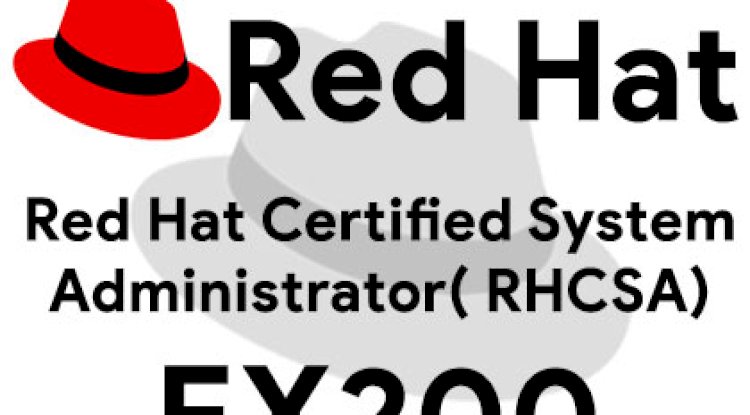How to Use Alfa Network Cards for Wi-Fi Hacking, Packet Injection, and Wireless Security Testing | Full Guide for Ethical Hackers
Alfa Network Cards are among the most powerful tools used by ethical hackers and penetration testers to assess the security of wireless networks. Known for their long-range capabilities, packet injection support, and compatibility with Kali Linux, these external USB Wi-Fi adapters are essential in WPA/WPA2 handshake capture, deauthentication attacks, and wireless reconnaissance. This blog explores what Alfa cards are, how to use them step-by-step, top models used in hacking, and practical use cases in cybersecurity. It also answers 30 commonly asked questions to help beginners and professionals master wireless hacking using Alfa Network Cards.

Table of Contents
- Introduction
- What Are Alfa Network Cards
- Key Features of Alfa Network Cards
- Most Popular Alfa Network Card Models for Hacking
- Use Cases of Alfa Network Cards in Cybersecurity
- How to Use Alfa Network Cards for Wi-Fi Hacking: Step-by-Step Guide
- Additional Tips for Efficient Usage
- Legal Considerations
- Conclusion
- Frequently Asked Questions (FAQs)
Introduction
In the world of cybersecurity, wireless networks are often considered the weakest link in an organization's infrastructure. With the increasing use of Wi-Fi in homes, businesses, and public spaces, the need for secure wireless communication has never been greater. Ethical hackers and penetration testers play a crucial role in identifying vulnerabilities within these wireless environments. To perform in-depth wireless security assessments, professionals rely on powerful tools—and one such tool that has gained massive popularity is the Alfa Network Card.
Alfa Network Cards are USB Wi-Fi adapters that are specifically designed to support advanced features such as monitor mode and packet injection. These capabilities make them essential for capturing and analyzing wireless traffic, performing various Wi-Fi attacks, and simulating real-world hacking scenarios. This blog explores the features, capabilities, popular models, and step-by-step instructions on how to use Alfa Network Cards for ethical hacking and wireless penetration testing.
What Are Alfa Network Cards
Alfa Network Cards are external Wi-Fi adapters manufactured by Alfa Network Inc., a company known for producing high-performance wireless communication equipment. These adapters are widely used in the cybersecurity industry because they allow ethical hackers to bypass the limitations of built-in wireless cards. Unlike standard laptop Wi-Fi interfaces, Alfa cards support monitor mode and packet injection, which are essential for capturing network traffic and simulating attacks during security assessments.
Key Features of Alfa Network Cards
-
Monitor Mode: This allows the network card to listen to all wireless packets in the air, not just those addressed to it. This is useful for reconnaissance and packet capture.
-
Packet Injection: This capability lets you send crafted packets into the network, which is necessary for testing how access points and devices respond to malicious data.
-
High-Gain Antennas: Many Alfa models come with detachable antennas that significantly improve signal reception and range, making it easier to detect distant networks.
-
Driver Compatibility: Alfa cards are compatible with Kali Linux, Parrot OS, and other popular penetration testing operating systems. They also support a wide range of chipsets including Atheros, Realtek, and Mediatek.
-
Long-Range Performance: These cards are engineered to maintain stable connections over longer distances, ideal for outdoor testing or testing in large facilities.
Most Popular Alfa Network Card Models for Hacking
| Model Name | Chipset | Frequency Band | Ideal Use Case |
|---|---|---|---|
| AWUS036NHA | Atheros AR9271 | 2.4 GHz | Excellent for packet injection and WPA attacks |
| AWUS036NH | Ralink RT3070 | 2.4 GHz | Reliable for general Wi-Fi penetration testing |
| AWUS036ACH | Realtek RTL8812AU | Dual-Band | Fast scanning and 5 GHz network support |
| AWUS1900 | Realtek RTL8814AU | Dual-Band | Best for high-speed monitoring with multiple antennas |
Use Cases of Alfa Network Cards in Cybersecurity
Alfa Network Cards are frequently used in various wireless security assessment scenarios such as:
-
Capturing WPA and WPA2 handshakes
-
Conducting deauthentication attacks to disconnect clients
-
Performing brute-force attacks on WPS-enabled routers
-
Monitoring network traffic using tools like Wireshark and Kismet
-
Creating rogue access points for phishing simulations
-
Testing the strength of Wi-Fi passwords using dictionary attacks
How to Use Alfa Network Cards for Wi-Fi Hacking: Step-by-Step Guide
Below is a practical step-by-step example of how a penetration tester might use an Alfa card to capture a WPA handshake and attempt to crack the password using Kali Linux.
Step 1: Connect the Alfa Network Card
Plug the Alfa card into your system and verify that it is recognized.
iwconfig
This command shows all network interfaces. Look for something like wlan0 or wlan1 which represents your Alfa card.
Step 2: Enable Monitor Mode
To start capturing traffic, enable monitor mode using the following command.
airmon-ng start wlan0
Once enabled, the interface will change to something like wlan0mon.
Step 3: Scan for Wi-Fi Networks
Start scanning for available Wi-Fi networks to identify the target network.
airodump-ng wlan0mon
Take note of the target network's BSSID (MAC address) and channel number.
Step 4: Focus on a Specific Target
Now capture packets from the selected network.
airodump-ng --bssid -c -w capture wlan0mon
This will begin saving packets into a file for later analysis.
Step 5: Deauthenticate a Device
Send deauthentication packets to disconnect a client from the network. This forces the client to reconnect, during which the WPA handshake can be captured.
aireplay-ng -0 10 -a wlan0mon
Step 6: Crack the Captured WPA Handshake
Once the handshake is captured, use a dictionary attack to try to crack the password.
aircrack-ng capture-01.cap -w /usr/share/wordlists/rockyou.txt
This attempts to find the correct passphrase using the specified wordlist.
Additional Tips for Efficient Usage
-
Place your Alfa card in an elevated position to get a better signal.
-
Use directional antennas for long-range testing.
-
Disable NetworkManager in Kali Linux during monitoring to avoid interface conflicts.
systemctl stop NetworkManager
-
Use Wireshark for advanced packet analysis and to verify that handshake packets were captured properly.
-
Try Kismet for stealthy and continuous Wi-Fi monitoring.
Legal Considerations
It is important to note that using Alfa Network Cards to hack into networks without permission is illegal and unethical. Always ensure you have proper authorization or are working within a controlled lab environment when performing any kind of penetration testing.
Conclusion
Alfa Network Cards are one of the most trusted tools in a cybersecurity professional’s toolkit when it comes to wireless penetration testing. With their strong signal reception, support for advanced Wi-Fi features, and compatibility with Linux-based hacking tools, they provide everything needed to conduct thorough and effective wireless security assessments. By understanding how to properly use these devices, ethical hackers can expose weaknesses in Wi-Fi networks and help organizations build stronger defenses against cyber threats.
Frequently Asked Questions (FAQs)
What is an Alfa Network Card used for in ethical hacking?
Alfa Network Cards are used to perform wireless penetration testing, including capturing Wi-Fi traffic, injecting packets, conducting deauthentication attacks, and testing password security of WPA/WPA2 networks.
Which Alfa Network Card is best for Kali Linux?
The Alfa AWUS036NHA is highly preferred due to its Atheros AR9271 chipset, which is fully compatible with Kali Linux and supports both monitor mode and packet injection.
Can Alfa Network Cards capture WPA handshakes?
Yes, they can capture WPA and WPA2 handshakes which are later used for offline password cracking using tools like Aircrack-ng.
Do Alfa cards support packet injection?
Yes, most Alfa models support packet injection, which is essential for simulating attacks and testing network responses.
How do I enable monitor mode on an Alfa card in Kali Linux?
Use the command airmon-ng start wlan0 to enable monitor mode. Replace wlan0 with your actual interface name.
What chipsets are used in Alfa Network Cards?
Popular chipsets include Atheros AR9271, Realtek RTL8812AU, RTL8187L, and RTL8814AU.
Can Alfa Network Cards hack Wi-Fi passwords?
While the card itself doesn’t hack, it enables tools like Aircrack-ng or Hashcat to perform attacks by capturing the necessary data like WPA handshakes.
Is Alfa AWUS036ACH good for 5 GHz hacking?
Yes, the AWUS036ACH supports dual-band Wi-Fi and is excellent for targeting both 2.4 GHz and 5 GHz networks.
How far can an Alfa card reach in terms of Wi-Fi range?
With high-gain antennas, Alfa cards can reach several hundred meters under ideal conditions, making them ideal for long-range attacks.
Do I need drivers for Alfa cards in Kali Linux?
Some models are plug-and-play, while others like AWUS036ACH may require installing Realtek RTL8812AU drivers manually.
Can I use Alfa Network Cards on Windows for hacking?
While technically possible, most ethical hacking tools are designed for Linux. Kali Linux or Parrot OS is recommended.
What are some tools I can use with Alfa cards?
Popular tools include Aircrack-ng, Airodump-ng, Reaver, Wifite, Bettercap, and Wireshark.
How do I know if my Alfa card supports monitor mode?
You can test it using the command iwconfig. If it allows enabling monitor mode via airmon-ng, then it supports it.
Can Alfa cards be used for Bluetooth hacking?
No, Alfa cards are specifically made for Wi-Fi and do not support Bluetooth functions.
Is Alfa AWUS036NHA still good in 2025?
Yes, it remains a solid and stable option for 2.4 GHz wireless penetration testing with excellent packet injection capabilities.
How do I perform a deauth attack with an Alfa card?
First enable monitor mode, identify a client and access point, then use aireplay-ng -0 10 -a .
Why is Alfa preferred over internal Wi-Fi cards?
Internal cards usually lack support for monitor mode and injection, while Alfa cards are designed specifically for hacking and testing.
Do Alfa cards work with Raspberry Pi?
Yes, many Alfa cards are compatible with Raspberry Pi running Kali Linux or other hacking distros.
Can I use multiple Alfa cards simultaneously?
Yes, you can run multiple Alfa cards to monitor and inject traffic on different channels concurrently.
What does the antenna size matter in Alfa cards?
Larger antennas improve signal gain and range, helping in capturing weak or distant Wi-Fi signals effectively.
Is it legal to use Alfa Network Cards for Wi-Fi hacking?
Only if you have permission or are performing testing in a lab or authorized environment. Unauthorized access is illegal.
Can Alfa Network Cards detect hidden SSIDs?
Yes, tools like Airodump-ng used with Alfa cards can detect and reveal hidden SSIDs by monitoring probe responses.
Are Alfa cards good for Evil Twin attacks?
Yes, they are often used to create rogue access points for Evil Twin attacks during penetration tests.
How to troubleshoot if my Alfa card is not detected?
Use lsusb to confirm it's connected, then check with iwconfig. Install or reinstall drivers if necessary.
How do I crack a WPS-enabled router using an Alfa card?
Use tools like Reaver or Bully that exploit WPS PIN vulnerabilities when used with compatible Alfa cards.
Can I sniff traffic with Alfa cards?
Yes, Alfa cards in monitor mode can sniff packets using tools like Wireshark or Tcpdump.
Can Alfa cards connect to Wi-Fi normally as a client?
Yes, when not in monitor mode, Alfa cards can function as normal Wi-Fi adapters for connectivity.
What operating systems support Alfa cards?
Primarily Linux distros like Kali, Parrot, and BackBox, but drivers are also available for Windows and macOS in some cases.
Can I create a fake access point with an Alfa card?
Yes, using tools like Fluxion, Bettercap, or Airbase-ng, Alfa cards can host fake APs for social engineering attacks.
Are there dual-band Alfa cards for ethical hacking?
Yes, models like AWUS036ACH and AWUS1900 support both 2.4 GHz and 5 GHz bands and are effective for modern Wi-Fi environments.












![Top 10 Ethical Hackers in the World [2025]](https://www.webasha.com/blog/uploads/images/202408/image_100x75_66c2f983c207b.webp)

![[2025] Top 100+ VAPT Interview Questions and Answers](https://www.webasha.com/blog/uploads/images/image_100x75_6512b1e4b64f7.jpg)









